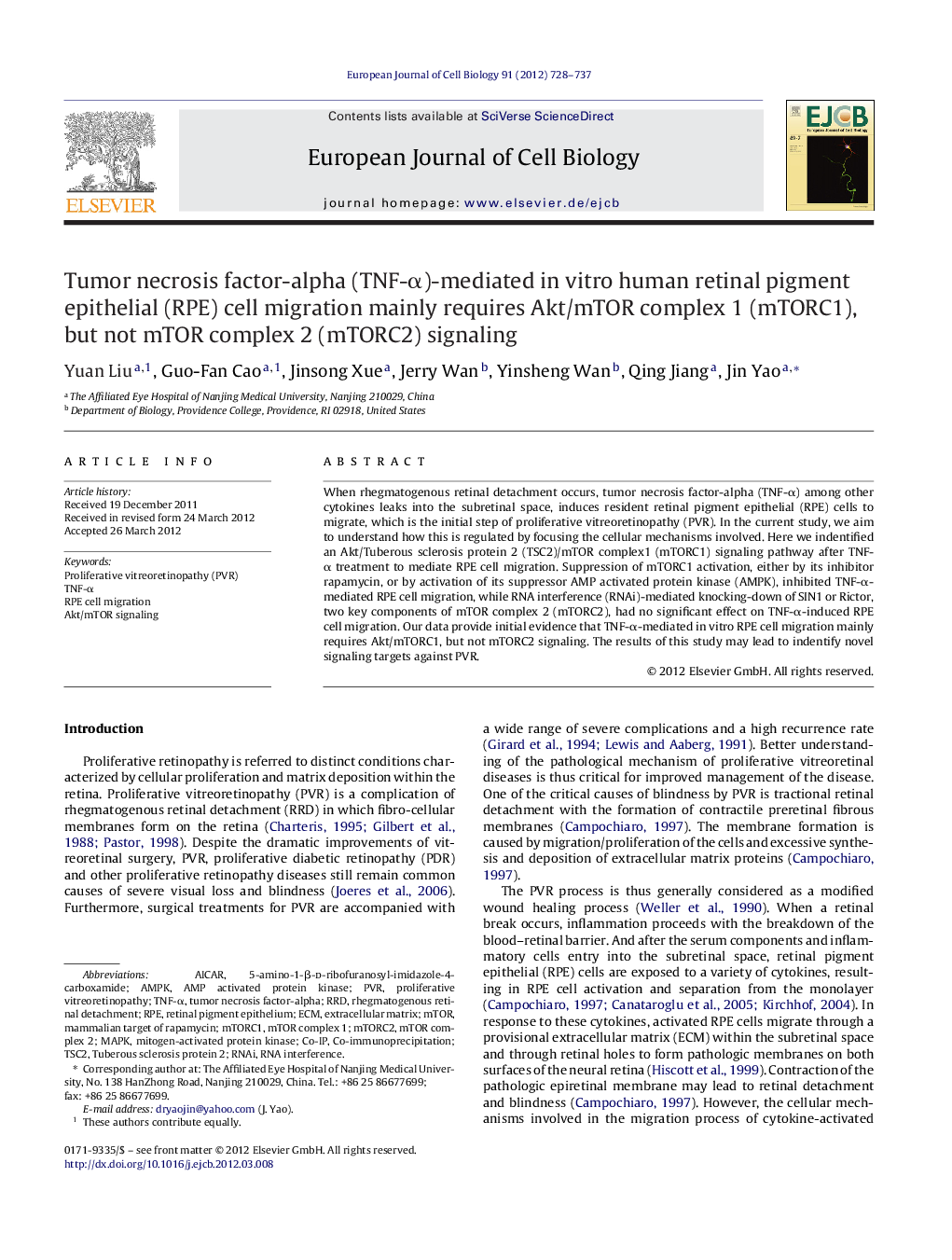| کد مقاله | کد نشریه | سال انتشار | مقاله انگلیسی | نسخه تمام متن |
|---|---|---|---|---|
| 2178572 | 1549701 | 2012 | 10 صفحه PDF | دانلود رایگان |

When rhegmatogenous retinal detachment occurs, tumor necrosis factor-alpha (TNF-α) among other cytokines leaks into the subretinal space, induces resident retinal pigment epithelial (RPE) cells to migrate, which is the initial step of proliferative vitreoretinopathy (PVR). In the current study, we aim to understand how this is regulated by focusing the cellular mechanisms involved. Here we indentified an Akt/Tuberous sclerosis protein 2 (TSC2)/mTOR complex1 (mTORC1) signaling pathway after TNF-α treatment to mediate RPE cell migration. Suppression of mTORC1 activation, either by its inhibitor rapamycin, or by activation of its suppressor AMP activated protein kinase (AMPK), inhibited TNF-α-mediated RPE cell migration, while RNA interference (RNAi)-mediated knocking-down of SIN1 or Rictor, two key components of mTOR complex 2 (mTORC2), had no significant effect on TNF-α-induced RPE cell migration. Our data provide initial evidence that TNF-α-mediated in vitro RPE cell migration mainly requires Akt/mTORC1, but not mTORC2 signaling. The results of this study may lead to indentify novel signaling targets against PVR.
Journal: European Journal of Cell Biology - Volume 91, Issue 9, September 2012, Pages 728–737